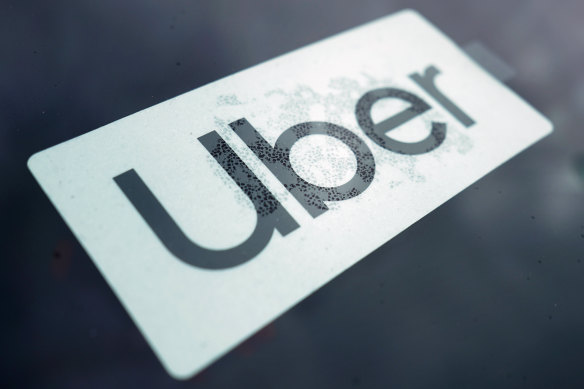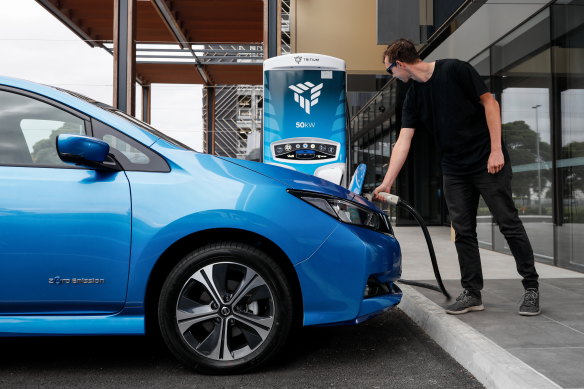- Exclusive
- Business
- Companies
- Electric vehicles
This was published 3 months ago
Uber EV pilot could jumpstart Australian second-hand market
Uber will offer drivers second-hand electric vehicles imported from Japan in an ownership pilot it says will help grow the Australian used electric vehicle market.
The ride-share and food delivery company has partnered with pre-owned vehicle importer Car Empire to launch the scheme – part of its commitment for all rides to be emissions-free by 2040 – under which drivers will be offered leases on second-hand electric vehicles in Brisbane and the Gold Coast.

The Australia-first Uber second-hand electric vehicle pilot starts from August 6 in Brisbane and the Gold Coast. Credit: AP
Uber’s Australia and New Zealand boss, Emma Foley, said the offer, which starts from $124 a week and can lead to outright ownership of the vehicle after five years, was in response to the high upfront costs of owning an electric vehicle.
Foley said that with cost the “primary barrier” to ownership in Australia, ride-share vehicles will play a role in getting more electric cars on the road

Emma Foley is Uber’s Australian managing director.
“You’ll continue to see those impacts of cars that have started on ride-share moving into the broader secondhand market over time.”
The second-hand electric vehicle market is smaller in Australia than countries with fuel efficiency standards already in place, such as New Zealand. In 2023, electric vehicles made up 0.6 per cent of Australian used car sales.
Meanwhile, data from the Federal Chamber of Automotive Industries on Monday showed while new plug-in hybrid vehicles were up 128.9 per cent compared with July 2023, sales of new electric vehicles were down slightly at 6.6 per cent of the market, from 7 per cent in 2023.
Twenty Nissan Leaf electric vehicles are available immediately under the Uber second-hand scheme, while Car Empire currently has the capacity to import about 200 vehicles a week. Car Empire director David Cosgrove said he expected the vehicles in Uber’s scheme to filter into the consumer market after three years.
“They all come with three year roadside assistance extendable up to five years for the term, but generally, we’ve found a majority of people (after that three years) they get to a point when they look at trading up from there.”

2021 Nissan LEAF e+ Australia Electric vehicle and charging infrastructure.
Anthony Broese van Groenou, co-founder of second-hand electric retailer The Good Car Company, said he had already seen an influx of cars previously used by ride-share companies.
He said the uptake by ride-share drivers had helped with “myth busting” issues like affordability and durability of electric vehicles, saying beyond “general wear and tear”, used electric vehicles “with a couple of hundred thousand” kilometres could “still perform really well”.
In September 2020, Uber committed to eliminating tailpipe emissions by 2040. It has since halved service fees for drivers using electric vehicles until mid-2025, launched Uber Green, under which riders in major cities can choose to ride in a hybrid or electric car at no extra cost, and made a deal with BP to offer discounted electric vehicle charging. In October last year, it announced a partnership with Chinese electric carmaker BYD to import 10,000 vehicles to offer to drivers, with leases from $269 a week, leading to outright ownership after four years.
Foley said the new, second-hand offer was not subsidised, and was “complementary” to the existing BYD offer.
In the first quarter of 2024, more than 4000 electric vehicle drivers were on the Australian platform, while 4 per cent of the total kilometres covered by Uber were driven in one. Foley said the company would like to see those numbers “in the double digits of kilometres very soon”, but said there was no fixed timeline for the rollout of the program to other cities.
She said charging infrastructure remained the other major obstacle.
“Better charging infrastructure all round, better charging infrastructure in the parts of the cities where our ride-share drivers live, which may not be as well serviced at the moment.”
The Business Briefing newsletter delivers major stories, exclusive coverage and expert opinion. Sign up to get it every weekday morning.